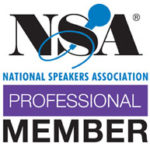The 47th Armstrong Lecture was presented by Dr. Jonathan Clark, Medical Director of the Red BullStratos Project, a flight test program, which successfully accomplished the highest stratospheric freefall parachute jump from 127,852 ft, achieving human supersonic flight at 843.6 mph (1357.6 kph). You’ve probably already seen the video (below). The overall aim was to improve the safety for space professionals as well as potential space tourists (!). Red Bull sponsored the scientific team. It was awesome.
I also really enjoyed meeting so many aerospace experts and clinicians of all disciplines. There were doctors, nurses, researchers, and aviators from all over the globe. Among the other interesting presentations: executive function and G load, safety cultures, cardiac and vascular responses to microgravity, ebullism (the spontaneous evolution of liquid water to water vapor at body temperature when the ambient pressure is 47 mmHg or less; resulting injuries are generally fatal), aeronautical PTSD, pregnancy in aviation, effects of stress on human performance, and models of flight simulation. A large portion of the meeting was dedicated to the role of aerospace nursing – air evacuation and readiness, hyperbaric oxygen therapy, and various physiologic, clinical, and operational condition that impact health and safety support in the air, sea, and space. And, talk about a niche – glad someone is exploring such topics as: performance of AEDs under conditions of space flight turbulence, medical challenges of space tourism passengers, methods of chest compressions (CPR) in microgravity, and the contribution of hypoxia and altitude on cognitive performance, This was a truly unique experience, I highly recommend this conference! Here’s a link to the abstracts, for those interested in learning more.







